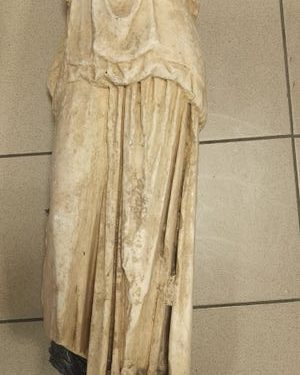- A 32-year-old Greek national found the statue on January 18 in a black bag near the trash cans.
- The statue, which appears to date from the Hellenistic period, is currently being held by authorities for forensic analysis.
- Discoveries of ancient objects are relatively common in Greece, often unearthed during construction projects.
A 2,000-year-old headless statue was discovered in a black plastic bag near rubbish bins in Greece, prompting a police investigation.
A 32-year-old resident found the statue on January 18 in the Greek port city of Thessaloniki, according to Hellenic police. The statue dates back to the Hellenistic period, which covers the period between the death of Alexander the Great in 323 BC and Rome’s conquest of Egypt in 30 BC, according to the History Channel.
The man who found the statue brought it to the authorities in Thessaloniki. It was then examined by an archaeologist from the Ephorate of Antiquities, which deals with the conservation, protection and preservation of antiquities.
A criminal team that fights trafficking in people and goods then recovered the statue, which will be forensically tested and ultimately sent to the Ephorate of Antiquities for further evaluation.
CBS News reported that the statue measures 32 inches high by 10 inches wide. It appears to depict someone wearing flowing clothing. He is missing his head and arms.

Finding ancient Greek statues is not common in the country
The trafficking of ancient Greek antiquities is not new, as police continue to investigate further finds and road and construction workers across the country still regularly find new pieces from that era, a reported CBS News.
In December, construction workers installing gas pipelines near Athens discovered a Roman-era statue of the ancient Greek god Hermes buried upright in a brick-lined pit near Athens’ historic Acropolis monument, according to CBS News and the Greek City Times. A few weeks ago, Thessaloniki authorities unveiled a litany of antiquities found during the decades-long construction of the metro, which was officially opened in November, media reports added.
Some of the key discoveries included a marble-paved Roman thoroughfare and tens of thousands of artifacts spanning the Greek, Byzantine and Ottoman periods, CBS News reported. These artifacts are now on display in metro stations, the media outlet said.


